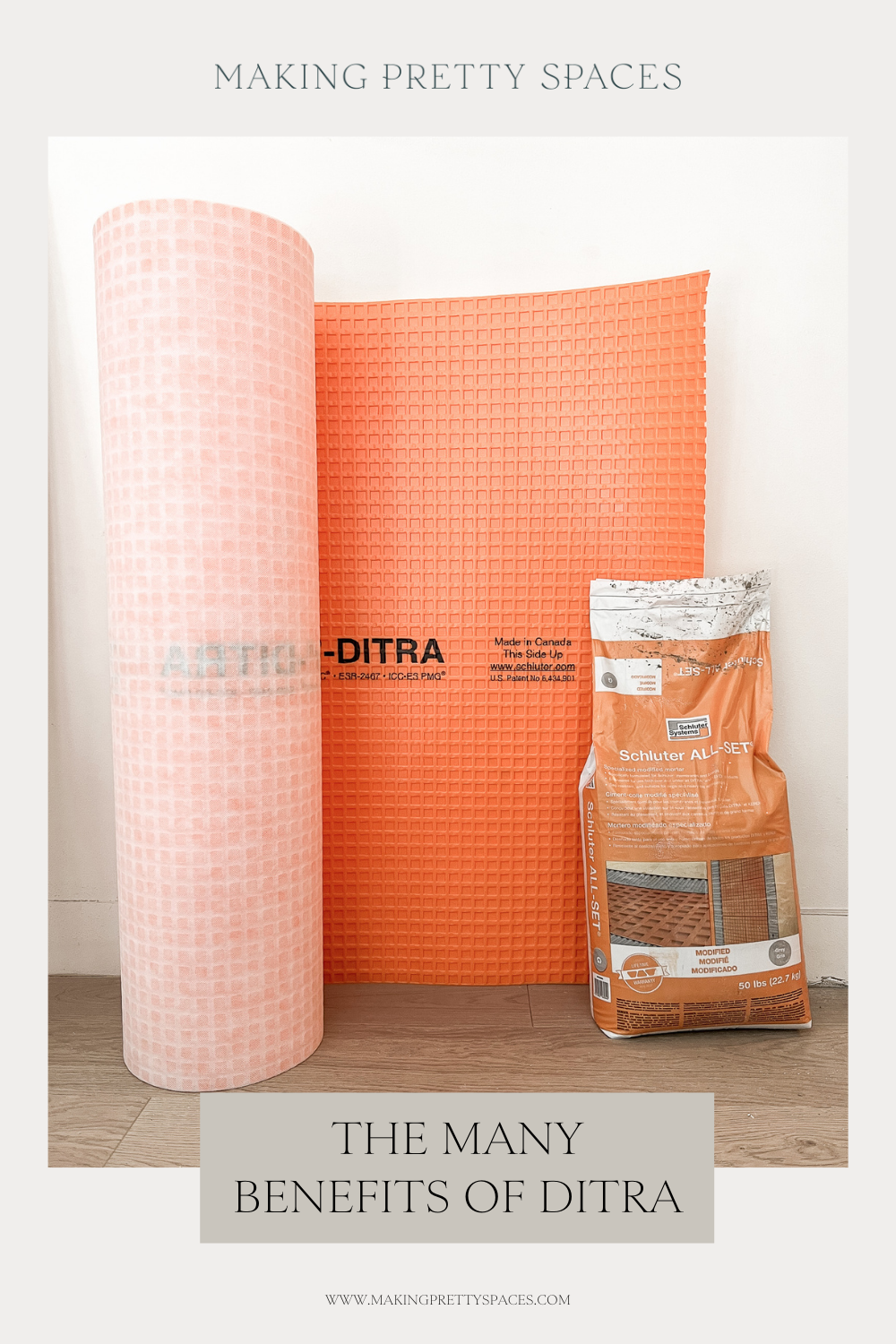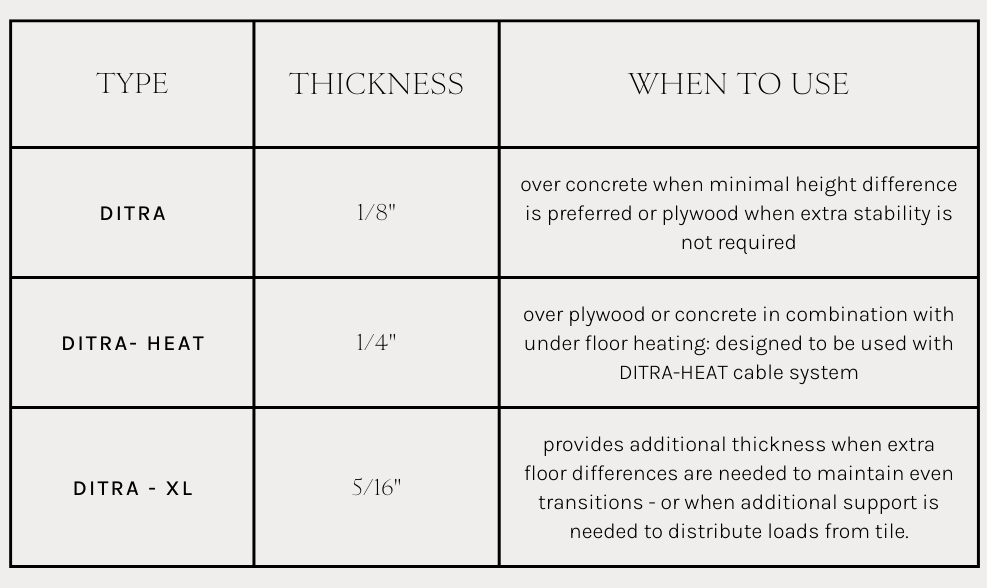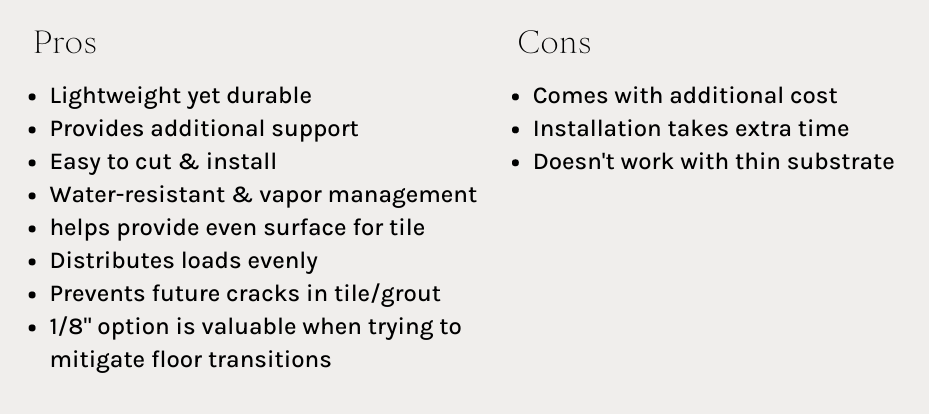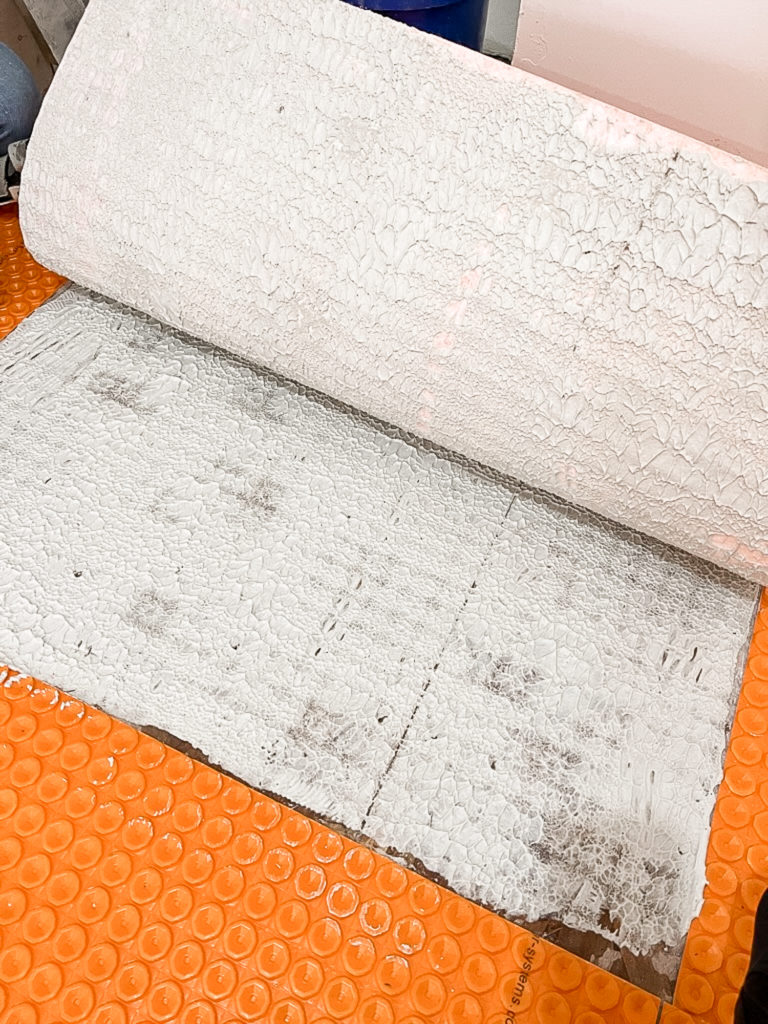Hey There!
Thanks for stopping by the MPS Blog. Here you'll find all the nitty gritty, behind-the-scenes details of the projects you see on my Instagram. Grab a cup of coffee and take a look around. Happy DIYing!
I'm Jennifer Gizzi.
Browse by Category
design
sourcing
diy TutorialS
moodboards
SHOP OUR HOUSE
gift guides
Search the Blog
Everything You Need To Know About Tile Underlayments: Ditra Vs Cement Board
February 16, 2022
I’ve shared almost a dozen tiling projects over the past year. I’ve chosen Ditra as my underlayment of choice every single time that it was needed. In my opinion, it is the best choice for almost any tiling project. It has become quite the popular question in my inbox. I thought I would take some time to outline the pros and cons of the most popular choices.

What is Ditra?
Taken from the Schluter website:
DITRA provides uncoupling through its open rib structure, which allows for in-plane movement that effectively neutralizes the differential movement stresses between the substrate and the tile, thus eliminating the major cause of cracking and delaminating of the tiled surface.
In simple terms: Ditra is an uncoupling membrane that absorbs stress from substrate movement and preserves the surface and integrity of the tile and grout, preventing cracks. It allows the substrate and the tile to move independently.
Ditra is made by Schluter and is an “alternative” for the commonly used cement board or HardieBacker. You would use one or the other but not both. Many people use it primarily when laying tile on concrete, but I think its a solid choice with plywood subfloors as well.
I have been using Ditra as my primary tile underlayment for the past few years. I’ll share the pros and cons, but spoiler alert: there are not too many scenarios where you convince me it’s not the best option.
I’ve summed up the main benefits of Ditra:
- ability to prevent cracks in tile/grout with it’s uncoupling characteristics
- provides support and distributes load of tile when there is an appropriate subfloor
- comes in multiple thicknesses (1/8″ is a excellent choice when you need to minimize floor height)
- lightweight and easy to install with minimal extra tools
- provides waterproofing and an excellent vapor barrier
The concept of “uncoupling” has been around for thousands of years. Old Europeans used to use a layer of sand between the substrate and the tile – allowing the tile to shift independently. When you think about the concept of this, there are only a few instances where a flooring substrate will have zero movement. Concrete will always shift and plywood will typically expand and contract with weather changes.
According to the manufacturer, regular Ditra should only be used for single-layer plywood flooring with joists up to 19.5″. If you have a single layer of plywood or OSB (5/8″ or 3/4″) – check for joist spacing before deciding on which type of Ditra to use. The Ditra-XL will provide additional support on large joist spacing or if you happen to have a really thin plywood subfloor (1/2″). My house has a 3/4″ plywood subfloor with 16″ joist spacing so any of the Ditra options could work for me. It comes down to the height I am trying to achieve as well as whether or not I want to incorporate floor heating.
Ditra options and when to use them
There are some things to note when using Ditra and the various kinds that Schluter offers. It can be confusing at first, but it really comes down to a few things to consider: the strength of the your substrate, joist spacing, & the thickness of final flooring you are trying to achieve.

Ditra is applied to the subfloor with thinset (either modified or unmodified depending on the substrate). I use the Schluter All-Set to make things easy on myself since it’s good for all scenarios and applications.
Ditra is easy to cut with a utility knife and doesn’t need any other fastening tools other than the thinset itself. In most cases, you can also lay tile the same day you install the Ditra, which is great for quick projects.
Here’s a quick list of pros/cons regarding Ditra:

Cement board will have some times where it can be a good option:specifially large spaces that need additional load support. I would also use Cement Board on vertical surfaces like fireplaces.
There are some cheaper versions of Ditra but I can’t speak to them. I’ve only used the Ditra brand and have been very happy with it! Hopefully this gave you some ideas for alternatives to cement board for your next tiling project. Every tiling job is different so it’s always important to do your own research!
WIFE, MAMA, DESIGNER, RENOVATOR, & PASSIONATE DIY EDUCATOR
I'm Jennifer Gizzi.
Let's create our dream homes together.
Navigate
home
about
blog
courses
shop
Social
Youtube
Legal
Terms & Conditions
Privacy Policy
© 2021 Making Pretty Spaces


Thank you so much for this information! We are currently remodeling our kitchen which has a small powder bath right off of it. As we started to demo it made sense to continue it into the powder bath since the kitchen floors continued into it. I have always been curious about the mystery “orange sheets” people use under their tile floors. This couldn’t have come at a better time. THANK YOU!
I’m so glad to hear that! Thank you for being here. 🙂
Awesome! Thank you so much 🙌🏽
Love this option
Thank you for this information! It’s so timely for me because I’m updating a small bathroom and we are trying for the first time to retile the floor. I’ve been following you for a while on Instagram and you are so good at giving real advice! Thank you for convincing me to try this myself. Keeping my fingers crossed.
Thank you for sharing! You’ve got this!
I needed to understand this! Thank you!!
Sometime could you maybe talk about Schluter?
I want to use it on a shower wall. Of course I’m nervous. How can you be sure to seal where the Schlueter meets the edge of a tub so that no water leaks between the two? I’m sure it works! I just need to understand it. Thank you for your patience with all of us. And thank you for educating us.
What about for backsplash kitchen tiles, hand made, Riad brand? They’re zellige. Thank you!
What a nice idea!